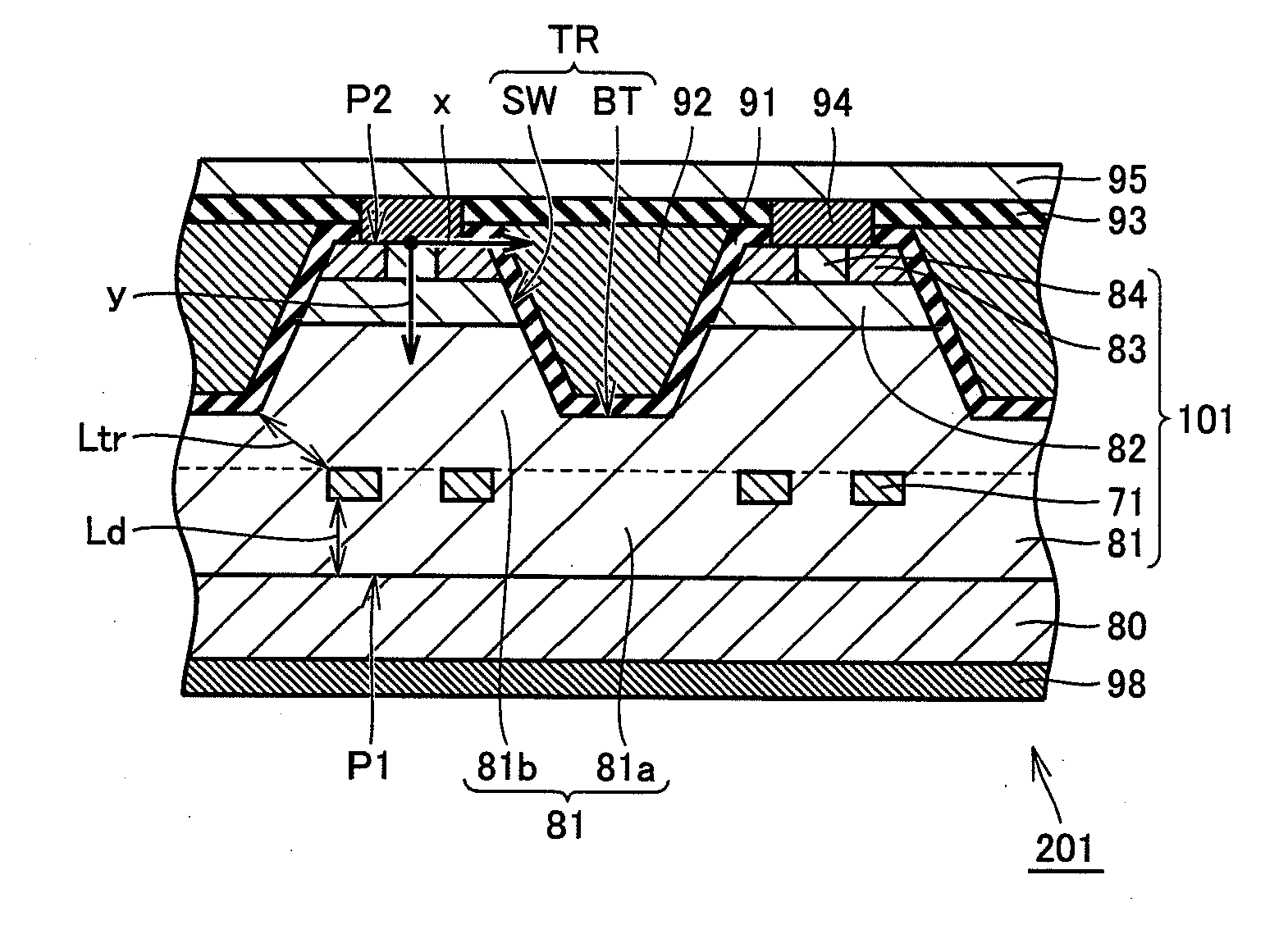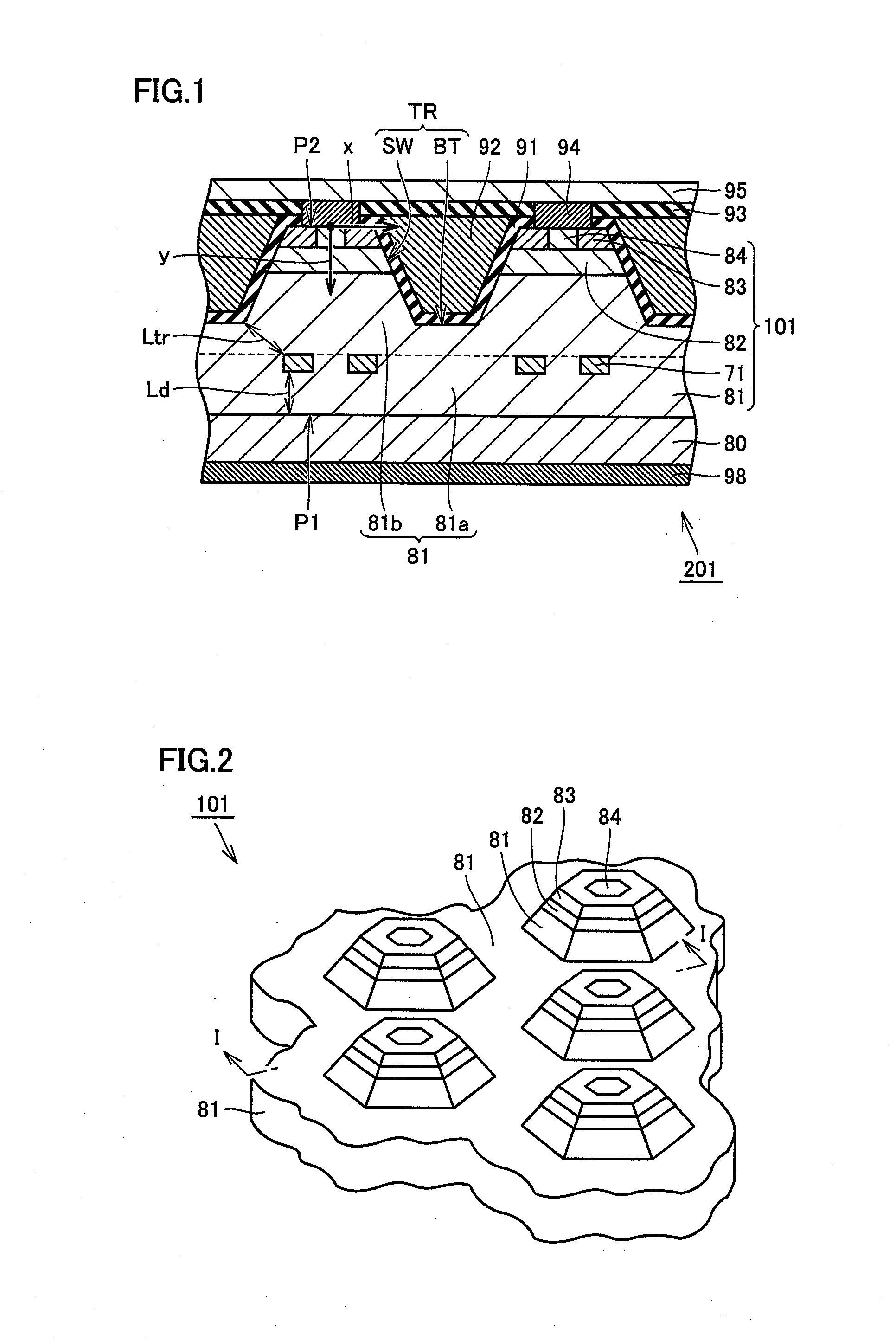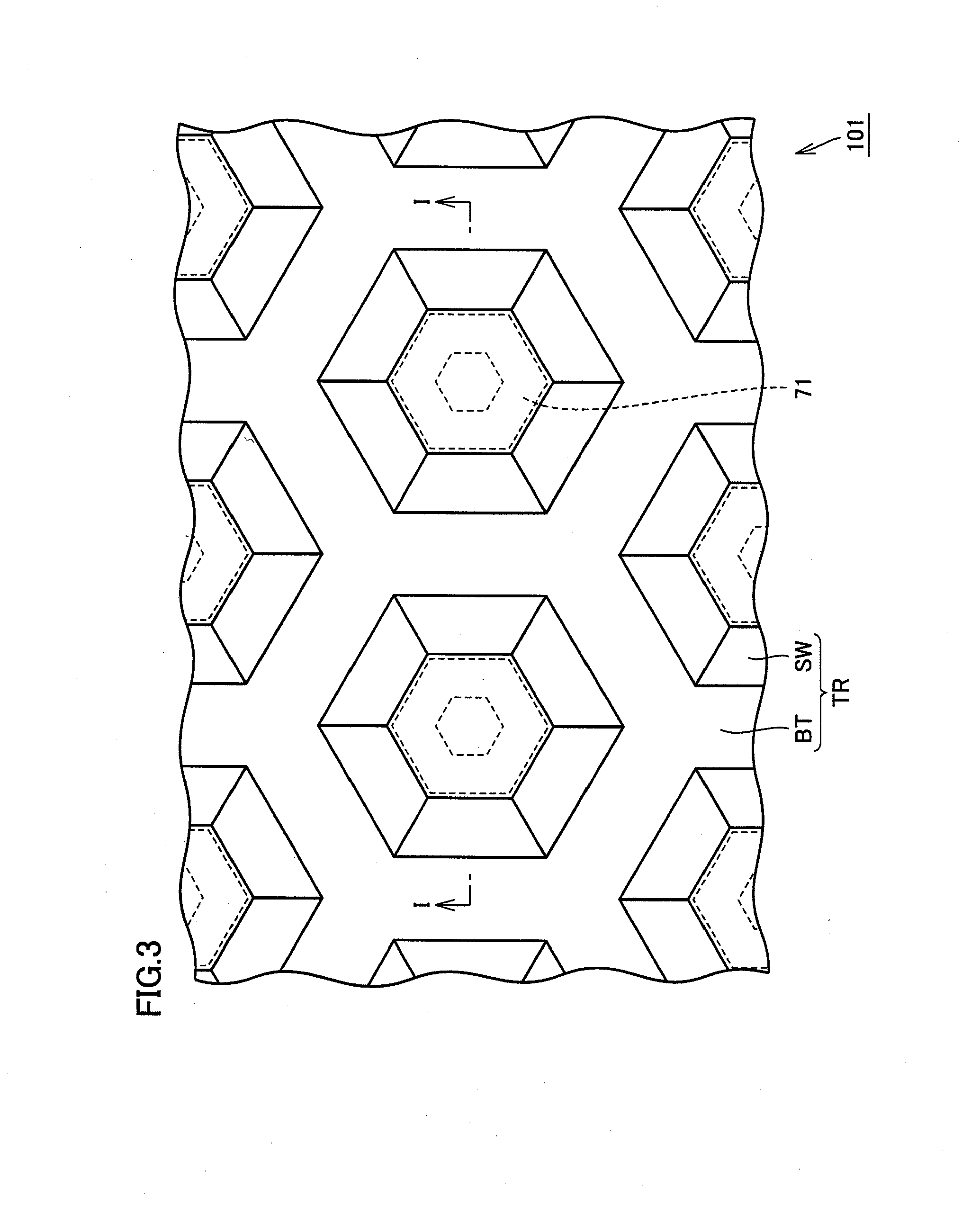Silicon carbide semiconductor device
a technology of silicon carbide and semiconductors, applied in the direction of semiconductor devices, basic electric elements, electrical equipment, etc., can solve the problems of high resistance of mosfet, inability to achieve inability to improve breakdown voltage by making full use of sic physical properties advantages, etc., to achieve the ratio of voltage across the first and second electrodes, the effect of reducing the depth of the relaxing region and reducing the electric field intensity
- Summary
- Abstract
- Description
- Claims
- Application Information
AI Technical Summary
Benefits of technology
Problems solved by technology
Method used
Image
Examples
first embodiment
[0068]As shown in FIGS. 1 to 3, a MOSFET 201 (a silicon carbide semiconductor device) in the present embodiment has a single crystal substrate 80, an epitaxial layer 101 (a silicon carbide layer), a gate oxide film 91 (a gate insulating film), a gate electrode 92, an interlayer insulating film 93, a source electrode 94 (a second electrode), a source interconnection layer 95, and a drain electrode 98 (a first electrode). MOSFET 201 preferably has a breakdown voltage not lower than 600 V across drain electrode 98 and source electrode 94. In other words, MOSFET 201 is preferably a power semiconductor device having a high breakdown voltage.
[0069]Epitaxial layer 101 is a silicon carbide layer epitaxially grown on single crystal substrate 80. Epitaxial layer 101 has hexagonal crystal structure having a poly type of 4H. Epitaxial layer 101 has a lower surface P1 (a first main surface) facing single crystal substrate 80 and an upper surface P2 (a second main surface) opposite to lower surfa...
second embodiment
[0112]Referring to FIG. 17, a MOSFET 202 in the present embodiment has an epitaxial layer 102 instead of epitaxial layer 101 in the first embodiment. Epitaxial layer 102 has a relaxing region 72. Relaxing region 72 has a shape from which an opening in relaxing region 71 (FIG. 3) has been eliminated in a plan view (FIG. 18). Namely, relaxing region 72 has a shape similar to the hexagonal shape of upper surface P2 in a plan view. It is noted that features other than the above are substantially the same as those in the first embodiment described above, and therefore the same or corresponding elements have the same reference characters allotted and description thereof will not be repeated.
third embodiment
[0113]Referring to FIG. 19, a MOSFET 203 in the present embodiment has an epitaxial layer 103 instead of epitaxial layer 101 in the first embodiment. Epitaxial layer 103 has a relaxing region 73. Relaxing region 73 extends along trench TR in a plan view (FIG. 20). It is noted that features other than the above are substantially the same as those in the first embodiment described above, and therefore the same or corresponding elements have the same reference characters allotted and description thereof will not be repeated.
[0114]Then, intensity of electric field in a direction of thickness (a vertical direction in FIG. 19) applied to gate oxide film 91 at a position lying between n drift layer 81 and the corner portion of trench TR while MOSFET 203 is in the OFF state (hereinafter referred to as corner portion electric field intensity) was simulated. Consequently, corner portion electric field intensity of MOSFET 203 having relaxing region 73 was 5.7 MV / cm. In contrast, in a comparati...
PUM
 Login to View More
Login to View More Abstract
Description
Claims
Application Information
 Login to View More
Login to View More - R&D
- Intellectual Property
- Life Sciences
- Materials
- Tech Scout
- Unparalleled Data Quality
- Higher Quality Content
- 60% Fewer Hallucinations
Browse by: Latest US Patents, China's latest patents, Technical Efficacy Thesaurus, Application Domain, Technology Topic, Popular Technical Reports.
© 2025 PatSnap. All rights reserved.Legal|Privacy policy|Modern Slavery Act Transparency Statement|Sitemap|About US| Contact US: help@patsnap.com



